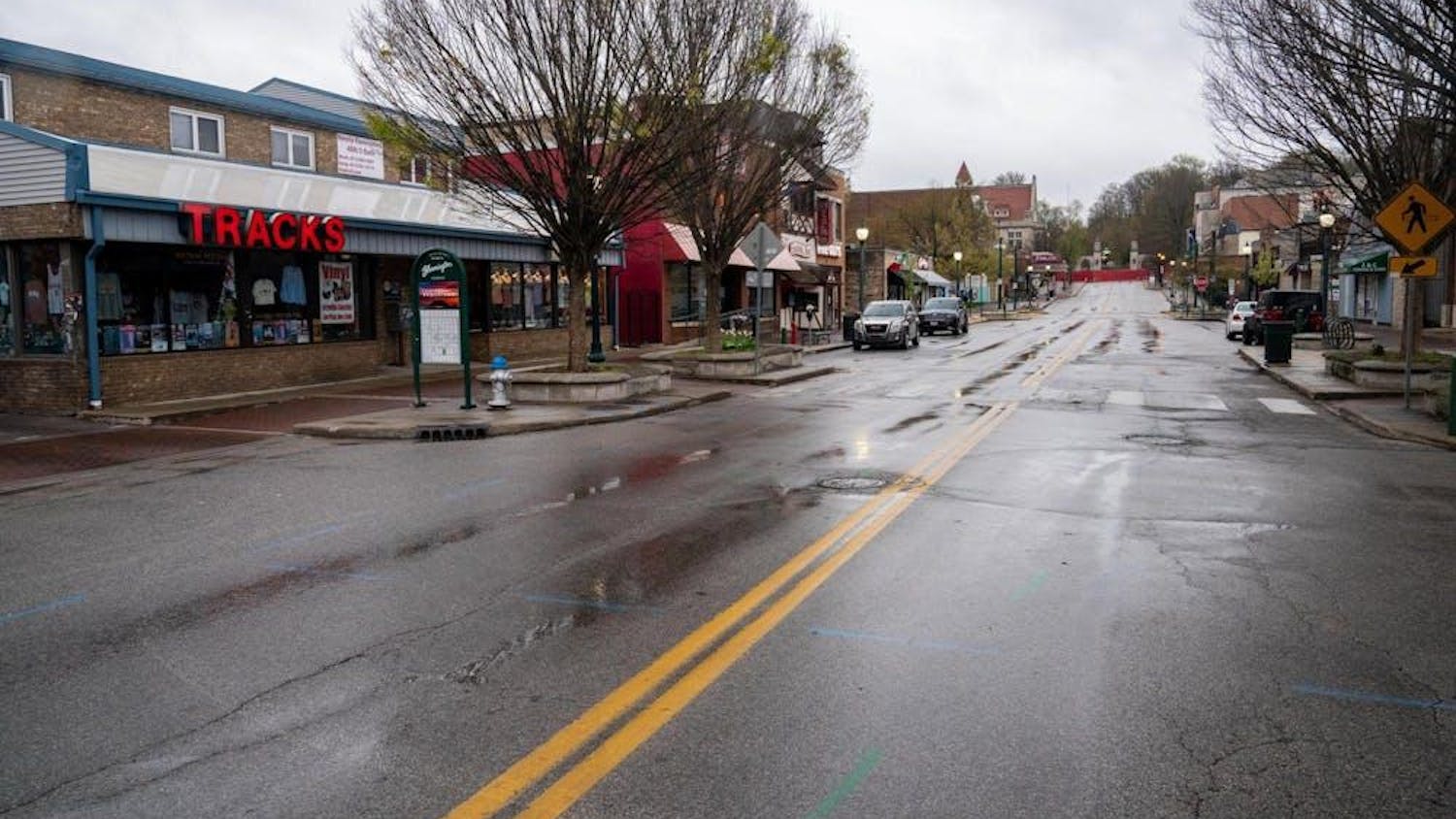Vote Center Study Committee members updated the Monroe County Council on Tuesday about the fiscal impact of switching the county to vote center voting.
Currently, voters must go to a specific polling place based on the precinct they live in. With vote centers, residents would be able to go to any location in Monroe County to vote on Election Day.
Of Indiana’s 92 counties, 65 use vote centers, according to the plan developed by the Vote Center Study Committee. After research and public input, the committee recommended the Monroe County Election Board switch all 29 of the current polling places to vote centers before the next elections in 2026. Over 20 members of the public spoke in favor of vote centers at a public meeting earlier this month.
The cost of converting all vote centers would be more than $600,000 for additional capital equipment, like label printers and scanners — meaning around a 5% increase in overall election costs if other expenses remain the same. Ilana Stonebraker, Vote Center Study Committee chair, said that equipment would last six to eight years, equaling an annual cost around $75,000 to $100,000.
The county already has $35,000 in Help America Vote Act federal grant money that will pay for five printers with auto-scanning kits, according to Election Supervisor Kylie Farris, and it could receive more HAVA funding.
Committee member Steve Volan said the plan to convert all 29 locations would not change the number of staff needed.
Still, the committee looked into other options when making their recommendation, including converting just 22 polling places to vote centers, based on the average number of voters per center in eight other Indiana counties, or 11 vote centers, which is one per township.
Farris indicated Danny Shields, the Republican appointee on the three-member Monroe County Election Board, was interested in hearing the financial impact of fewer vote centers.
Vote center adoption requires a unanimous vote from the Election Board. The next public hearing on the plan will be May 19, when the board may vote on or amend it. The other two members are County Clerk Nicole Browne and Democratic appointee John Fernandez. The previous GOP appointee, John Arnold, said in February he would vote against adopting vote centers, citing the cost.
According to the committee’s presentation Tuesday, the equipment costs for 22 vote centers would be $557,145, about a 1.6% increase in total election costs. The price for 20 vote centers would be $540,904, which Stonebraker said would essentially be “cost neutral.” Election Day staffing costs would also be lower with 22 or 20 vote centers than with 29.
Farris said if the county did choose to reduce the number of polling places, they would shut down ones in close proximity — including one located across the street from another.
“Ones that are on the outer sides of the county, that most of our voters are concerned about losing, we’ve not touched,” Farris said.
Councilor Trent Deckard said keeping all 29 places made him most comfortable because it wouldn’t reduce the locations or make people travel farther.
Also part of the committee’s recommendation was to open three additional polling centers for at least 10 days of early voting. Currently, just one polling place, located in downtown Bloomington, hosts early voting for 28 days. The recommended locations are the Ellettsville Town Hall, the Monroe County Public Library Southwest Branch and the IU Center on Representative Government, or another place near campus.
Stonebraker said early voting is something the committee heard Monroe County voters are shifting to and that the new centers could help voters who can’t make it to the downtown location. The costs of the additional early voting centers would be about $180,000 to $322,000 annually.
Councilor Peter Iversen said the county should keep an eye on inflating personnel costs if the number of vote centers changes over time. Since 2016, according to the committee's presentation, the number of polling places has varied every election year, with a low of nine in 2019 and a high of 35 in 2016.
Deckard said he sees the vote center funding as within reach, especially with the public support.
“I think fiscally, this is actually much closer than not in being doable for folks,” Deckard said.
Members of the public can provide feedback on the vote center plan via an online form before the Election Board’s May 19 meeting.




